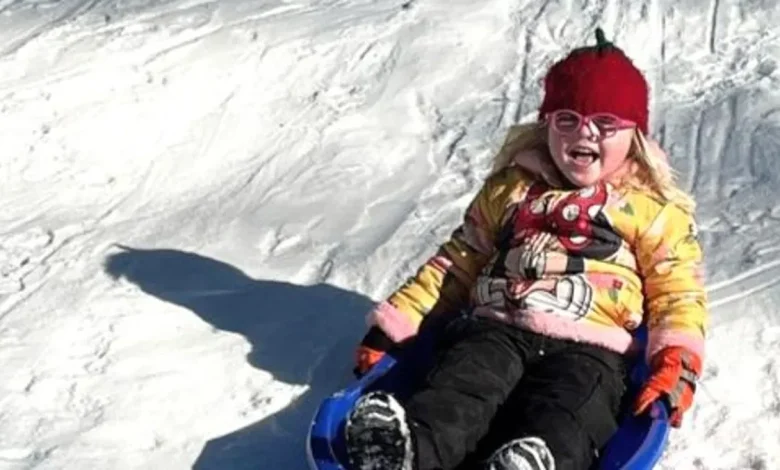Wet or dry winter in Redding, Shasta Cascade? What AccuWeather, Farmer’s Almanac say

8 fun facts about Mt. Shasta, one of California’s highest mountains
See views of the North State’s tallest landmark, Mt. Shasta, and learn about this active volcano that towers over Siskiyou County.
Forecasters at AccuWeather released their predictions for the 2025-2026 winter season, revealing what Shasta and Siskiyou residents should expect for this winter season.
Winter starts Sunday, Dec. 21, and as we creep closer, The Old Farmer’s Almanac and AccuWeather have both released their predictions for what the following winter months should bring.
AccuWeather makes predictions for expected precipitation, temperatures and snowfall based on historical data as well as current weather trends.
However, those long term predictions are hard to pin down, thanks in part thanks to El Niño and La Niña weather patterns.
To best understand what North State weather should bring for this winter season, 2025 to 2026, review both The Old Farmer’s Almanac as well as this AccuWeather prediction.
Note to readers: If you appreciate the work we do here at the Redding Record Searchlight, please consider subscribing yourself or giving the gift of a subscription to someone you know.
Will it be cold this winter in the North State?
AccuWeather predicts temperatures will be a little warmer — 1 to 3 degrees Fahrenheit — than average throughout most of winter in Shasta and Siskiyou counties.
That warm weather could last into next summer, according to Old Farmer’s Almanac’s long-term predictions. Expect a few cold snaps in late November and early December, and in February 2026.
Will winter be rainy in Redding, snowy in Mount Shasta?
Shasta County and most of Siskiyou County sit sandwiched between two winter weather patterns, according to AccuWeather forecasts. A wetter than average one to the north of Yreka, and a drier than average one south of Tehama County. That means there’s likely to be an average amount of rainfall in Redding, and an average amount of snow in Mount Shasta and Dunsmuir this winter.
Redding should get enough sporadic rainstorms during the rest of 2025 to match its usual historic rain averages, and possibly exceed them, said Dakari Anderson, meteorologist at the National Weather Service’s Sacramento branch.
Will winter be snowy in Siskiyou County?
Parts of Siskiyou County along the Oregon border, north of Yreka, are under a wetter-than-usual Pacific Northwest weather pattern this winter. Those areas will get more rain and snow than average between November 2025 and April 2026, according to AccuWeather forecasts.
That wet weather pattern extends north to the Canadian border and east into Idaho and Nevada.
Will 2026 be an El Niño or La Niña year?
A colder than average winter predicted across the Midwest and northeastern United States suggests a La Niña is on the way this winter.
While weak and brief, it will still have a major impact on weather winter patterns, according to a new weather study published in the Proceedings of the National Academy of Sciences.
The El Niño climate pattern — like the one climatologists said has been hanging around since 2023 — happens when sea water temperatures get warmer in the central and eastern tropical Pacific Ocean.
When those surface temperatures become colder than average, a La Niña, they can cause unpredictable weather patterns over the entire planet; causing droughts and major storms like blizzards and hurricanes.
La Niña impacts cross the continental United States, causing opposing warm and cold weather differences in the south and north and making it hard to predict weather patterns in the unpredictability in the Northeast.
When do we turn our clocks back in 2025?
Daylight Savings Time ends at 2 a.m. on Sunday, Nov. 2, 2025, local time. North State residents should turn their clocks back an hour that night, giving them an extra hour to sleep, play, etc.
In spring, we lose an hour, but in autumn we gain it back. The old mnemonic “fall back, spring forward” helps people remember which direction to turn their clocks in autumn and spring.
When is the next equinox?
The next equinox is in spring. Also called the vernal equinox, it arrives on Friday, March 20, 2026.
Equinoxes happen twice a year, in spring and fall, when the Earth’s axis is neither tilted toward the sun in the summer nor away from it in the winter. The day of an equinox has nearly equal amounts of daylight and night, according to the National Weather Service.
How does AccuWeather make its predictions?
AccuWeather gathers data using satellites in 40 countries to patrol land, sea and air activity. AccuWeather also uses historical data based on past averages as well as current weather phenomenon to best predict forecasts.
However, predicting a whole season is much trickier due to the length and time in advance needed for the prediction, so accuracy can vary.
Reporter Paige Moore at the Arizona Republic and Doyle Rice at USA Today assisted with this story.
Jessica Skropanic is a features reporter for the Record Searchlight/USA Today Network. She covers science, arts, social issues and news stories. Follow her on Twitter @RS_JSkropanic and on Facebook. Join Jessica on Record Searchlight Facebook groups Get Out! Nor Cal , Today in Shasta County and Shaping Redding’s Future. To support and sustain this work, please subscribe today. Thank you.





